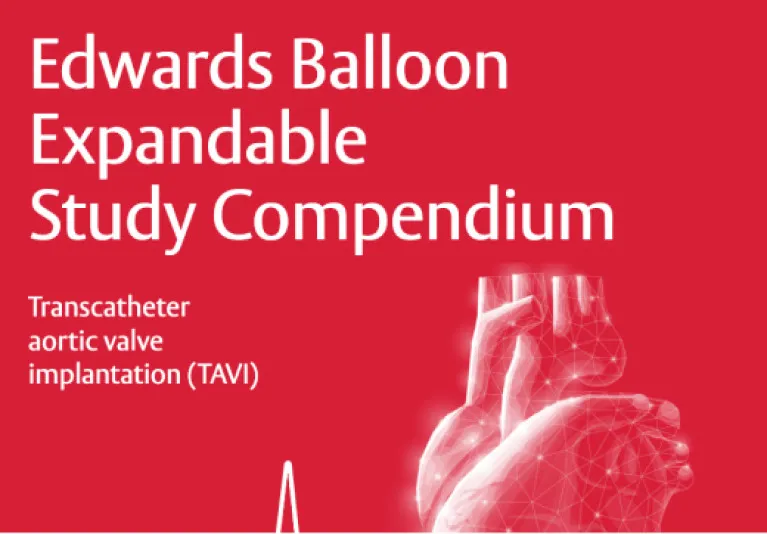PARTNER IIA Trial - TAVI shows similar outcomes compared to sAVR1
- A large prospective, multicentre trial enrolling intermediate-risk severe aortic stenosis (sAS) patients randomised to either TAVI or surgery (sAVR)
- The rate of the composite of all-cause mortality or disabling stroke at 2 years (primary endpoint) was non-inferior with TAVI and sAVR
- In the transfemoral-access cohort (76% of patients), TAVI was superior to sAVR with regards to the primary endpoint
- Compared with sAVR, TAVI resulted in shorter recovery times and a faster return to mobility and home
The PARTNER IIA Trial study design1

Inclusion and exclusion criteria
Inclusions1
-
Severe aortic valve stenosis
- Aortic valve area <0.8 cm2 or AVA index <0.5 cm2/m2
- Mean gradient >40 mmHg or jet velocity >4.0 m/s
- Symptoms of AS (NYHA class ≥II)
- Intermediate surgical risk (STS score ≥4% and decision by a Heart Team)
Exclusions1
- Heart Team assessment of inoperability
- Evidence of an acute myocardial infarction ≤1 month (30 days) before the intended treatment
- Aortic valve is a congenital unicuspid or congenital bicuspid valve, or is noncalcified
- Other anatomical or clinical features that increased the risk of complications associated with either TAVI or sAVR or factors that could confound the results
Baseline characteristics
The baseline characteristics of the patients in the TAVI and sAVR groups were generally well balanced in the two groups with the exception of higher peripheral vascular disease (27.9% vs 32.9%, p=0.02) and atrial fibrillation (31.0 vs 35.2%, p=0.05) in the sAVR group.1*
* Plus–minus values are means ±SD.
† The body-mass index is the weight in kilograms divided by the square of the height in metres.
‡ Scoring on the risk model of the Society of Thoracic Surgeons (STS) uses an algorithm that is based on the presence of coexisting illnesses in order to predict 30-day operative mortality. The STS score equals the predicted mortality expressed as a percentage. Less than 5% of patients in the population on which the STS algorithm is based had a predicted operative mortality (risk score) of more than 10%.
§ To convert values for creatinine to micromoles per litre, multiply by 88.4.
Reported clinical and patient outcomes
The rate of death from any cause or disabling stroke was similar in the TAVI group and the sAVR group (p=0.001 for noninferiority). At 2 years, the event rates were 19.3% in the TAVI group and 21.1% in the sAVR group (p=0.25)1
- In the transfemoral-access cohort, TAVI resulted in a lower rate of death or disabling stroke than sAVR (p=0.05)
Intention-to-treat population 1

Transfemoral-access cohort, intention-to-treat analysis1

All percentages are Kaplan–Meier estimates at the specific time point and thus do not equal the number of patients divided by the total number of patients in the treatment group. P-values are for point-in-time comparisons.
Quality of life
Patients receiving transfemoral TAVI enjoyed an improved health status through 2 years of follow-up after the procedure from baseline, as measured using the KCCQ-OS (Kansas City Cardiomyopathy Questionnaire – Overall Summary)2

Patients receiving transfemoral TAVI also had more rapid health status improvements compared to sAVR.2
Find out more about the QoL analysis and see the full outcome data
Real-world setting
TAVI has demonstrated similar efficacy in intermediate-risk patients to clinical trials3,4
- ACC/STS TVT Registry: Propensity score matched 30-day outcomes showed no differences in all-cause mortality, all strokes and rates of new pacemakers between the ACC/STS TVT Registry, the PARTNER II S3i Trial and the S3i continued access registry3
- SOLACE AU Registry: At 1 year, the rates of death, major vascular complications, acute kidney injury, life-threatening or disabling bleeding, and reintervention were 8.6%, 3.0%, 1.25%, 1.1% and 1.5% respectively4
Clinical implications
What could a TAVI referral mean for your patients who match the PARTNER IIA Trial characteristics?
- Lowering your patients’ risk of death or disabling stroke through 2 years vs sAVR1
- A speedy recovery to help patients to get back to the life they love1
- Meaningful, early and late health status benefits which could give your patients the opportunity for a fuller life2
References:
1 Leon MB, et al. N Engl J Med 2016;374:1609-1620 and supplementary material.
2 Baron SJ, et al. JAMA Cardiol 2017;2(8) 837-845.
3 Tuzcu M. Presentation at EuroPCR, May 22‒25, 2018; Paris, France.
4 Walters D, et al. JACC 2016;68(18):B275‒B276.
Medical device for professional use. For a listing of indications, contraindications, precautions, warnings, and potential adverse events, please refer to the Instructions for Use (consult eifu.edwards.com where applicable).
PP--EU-0771 v2.0
